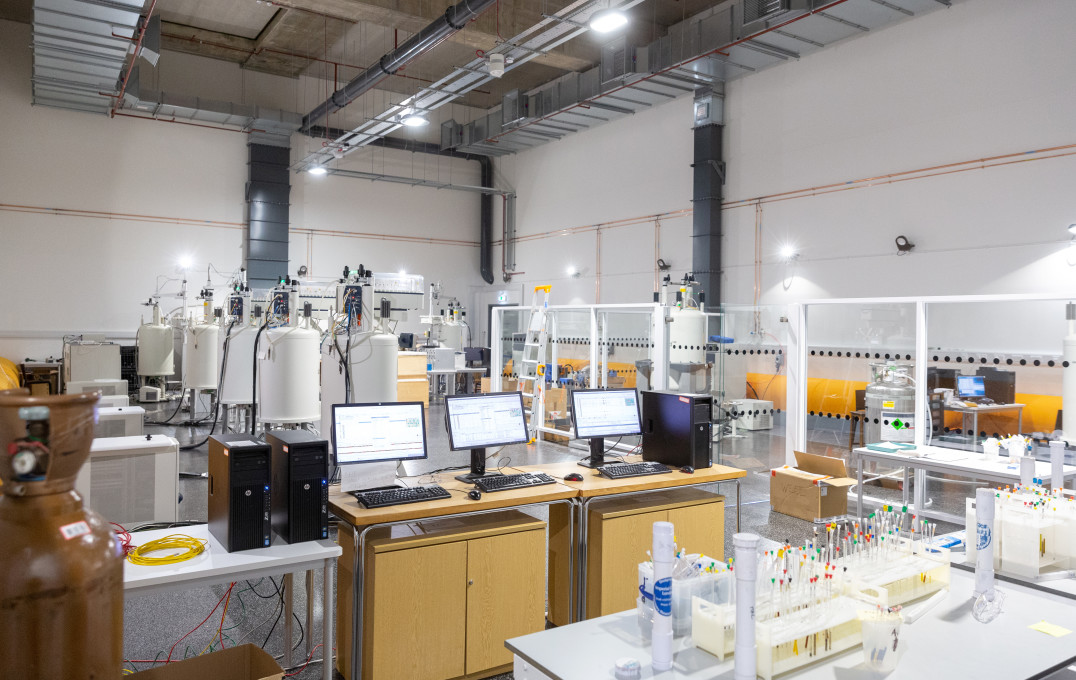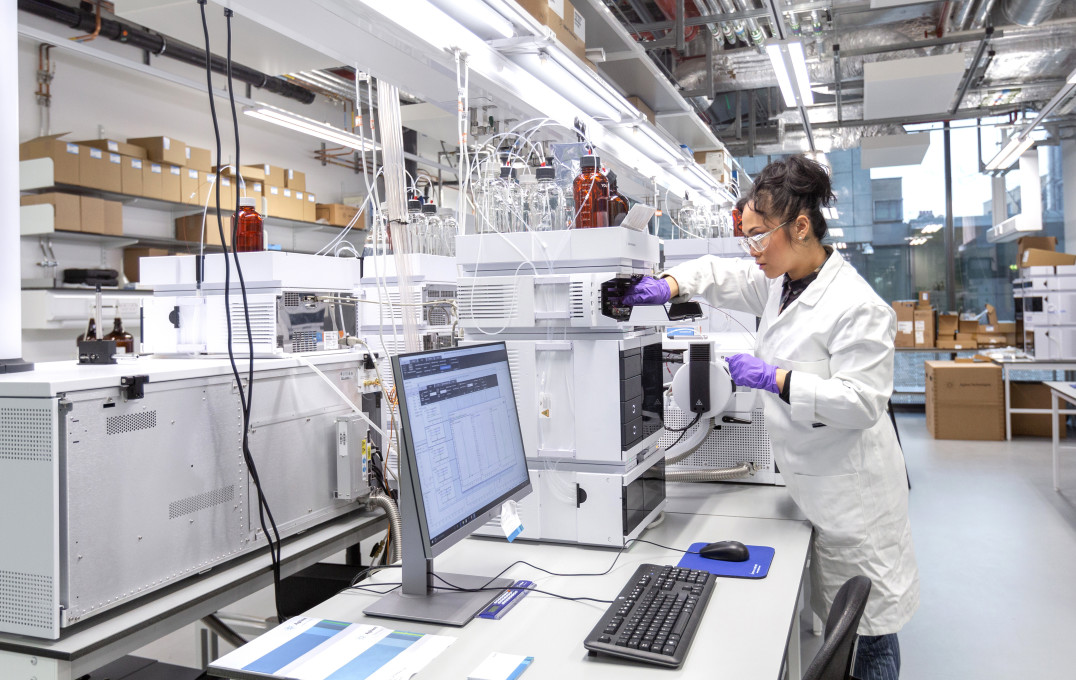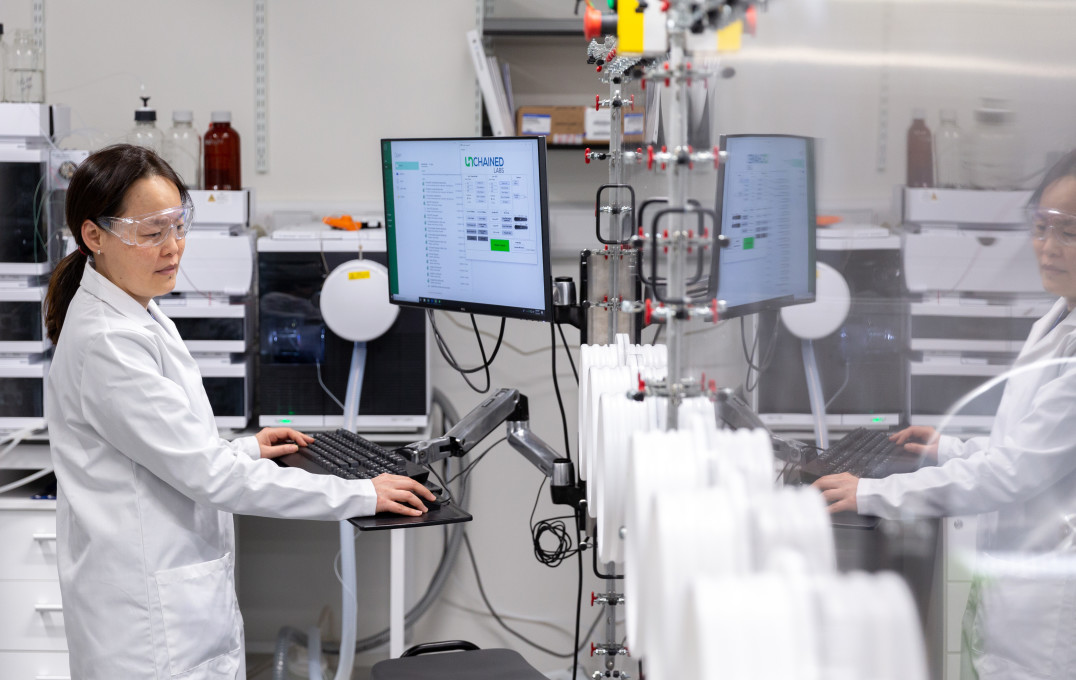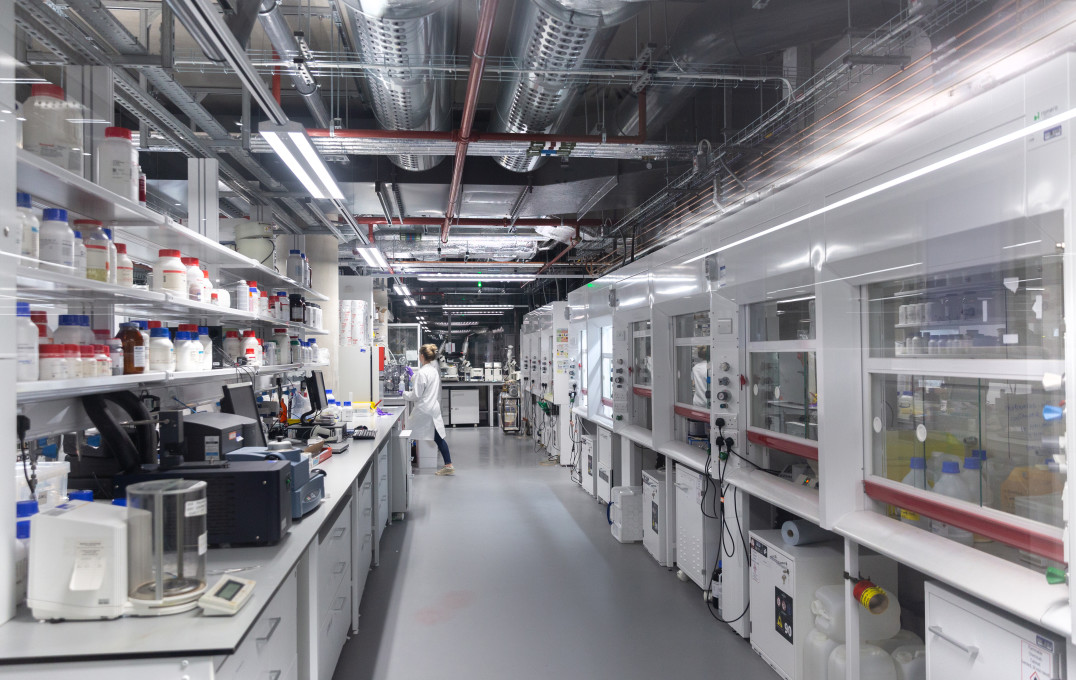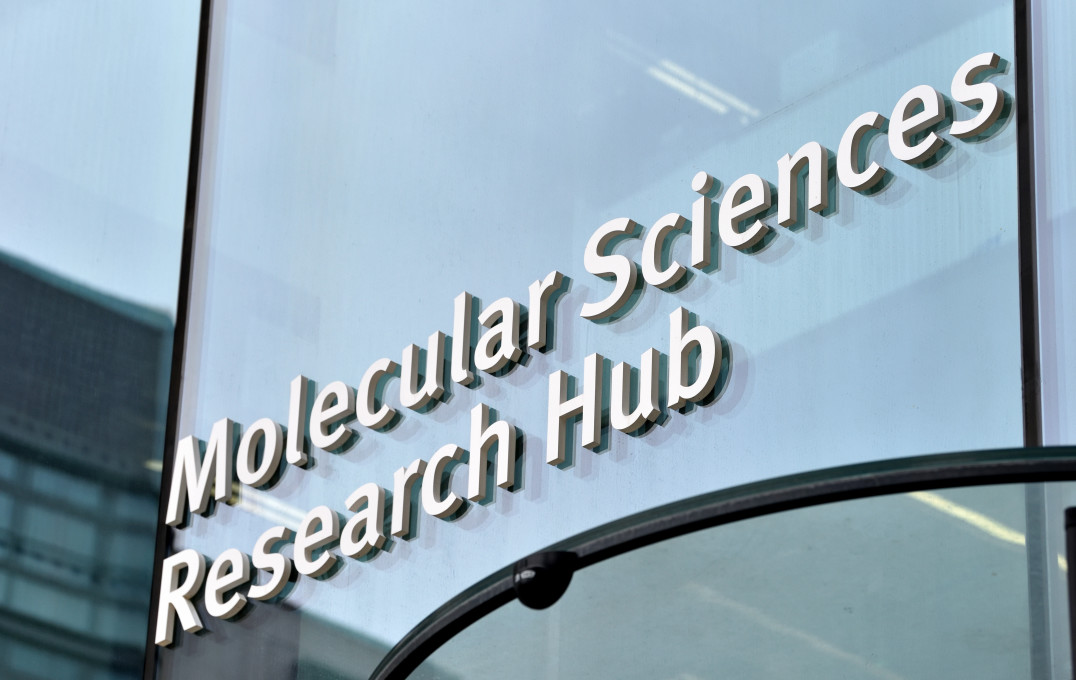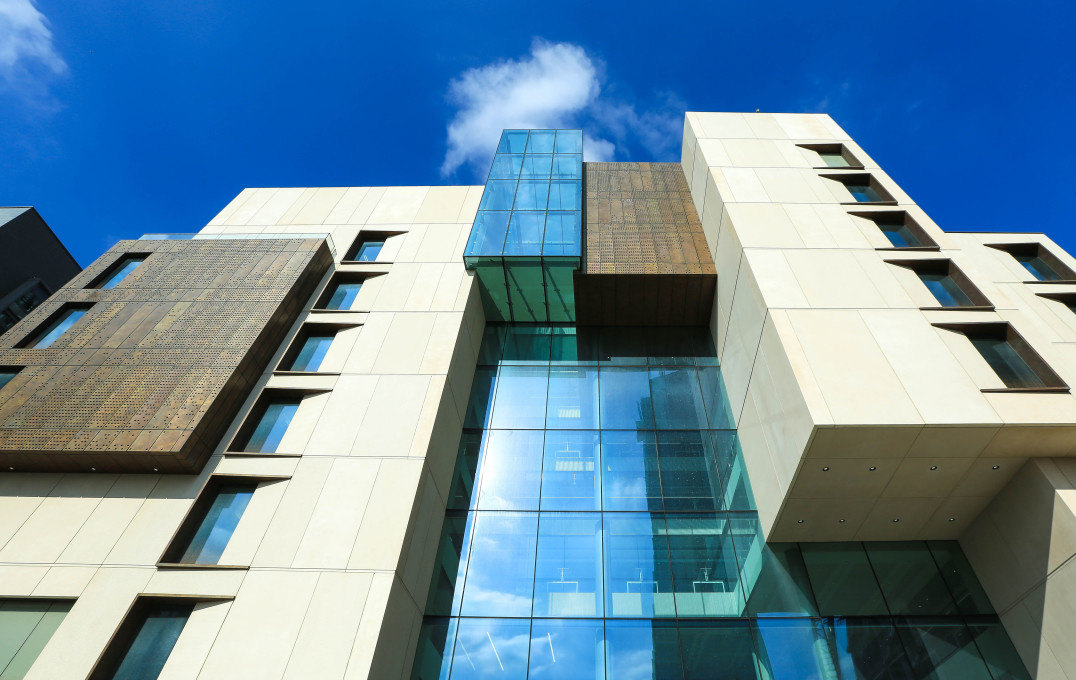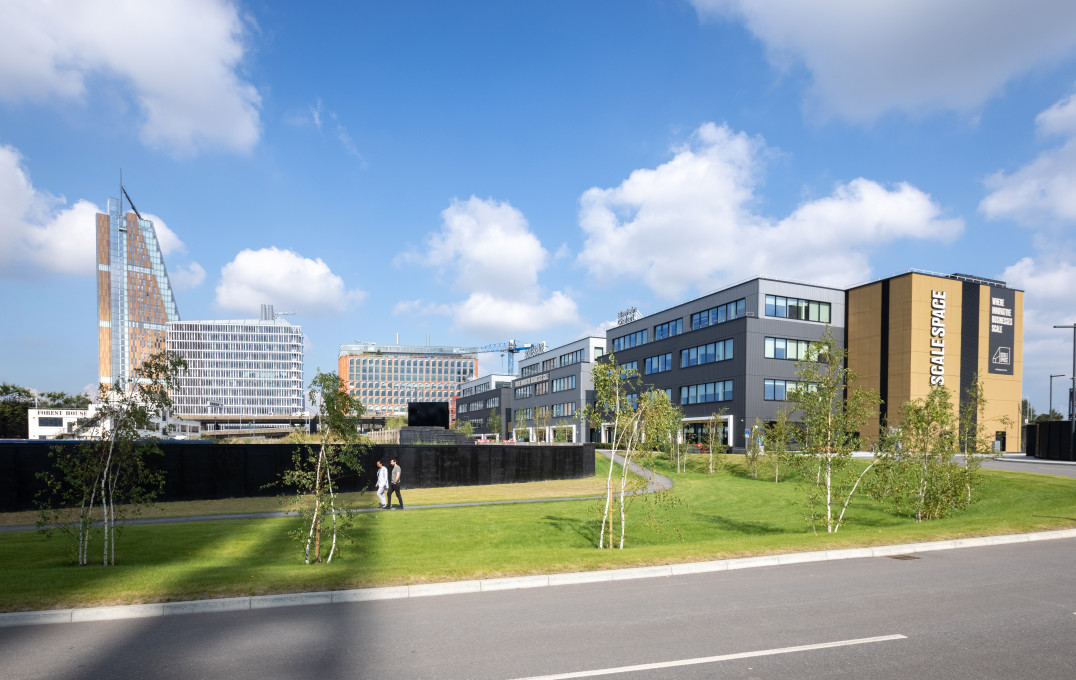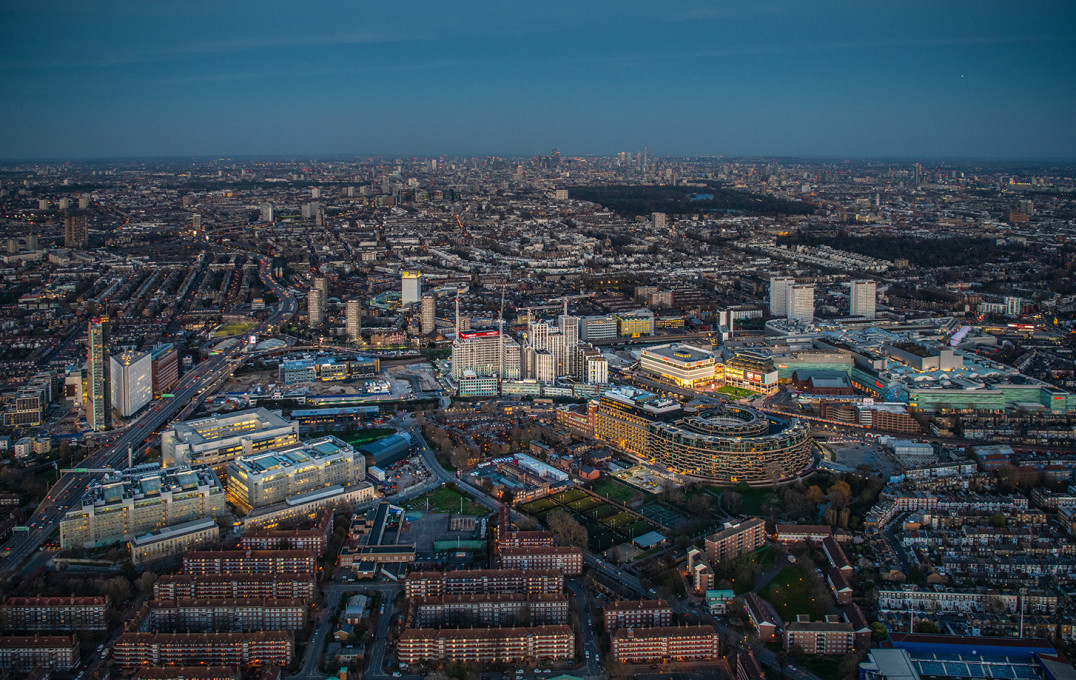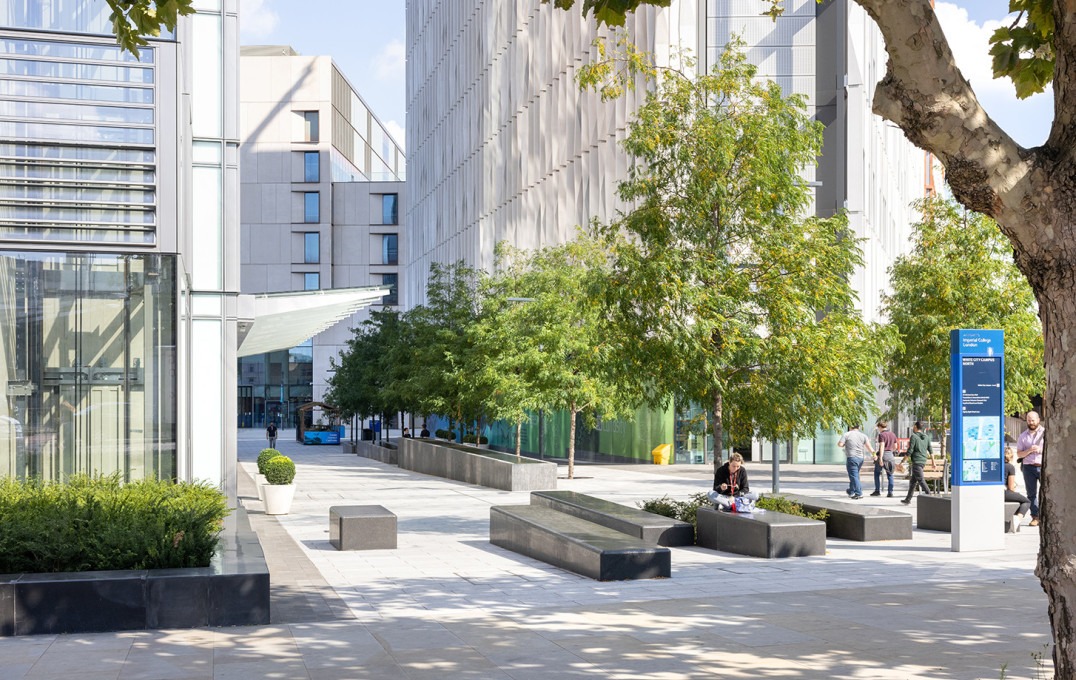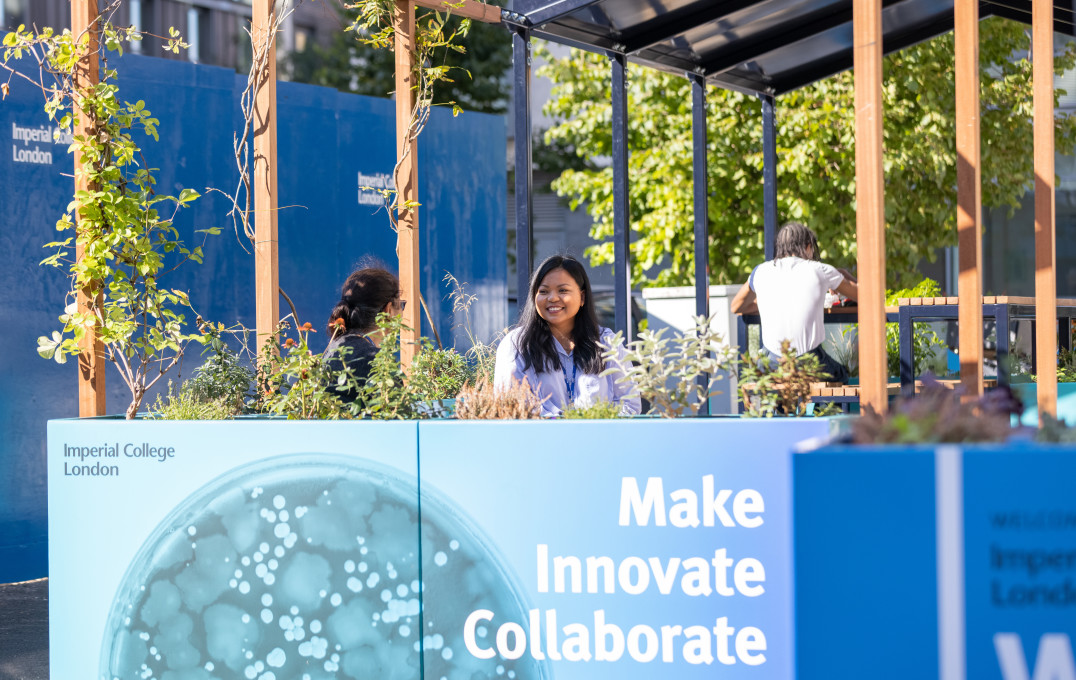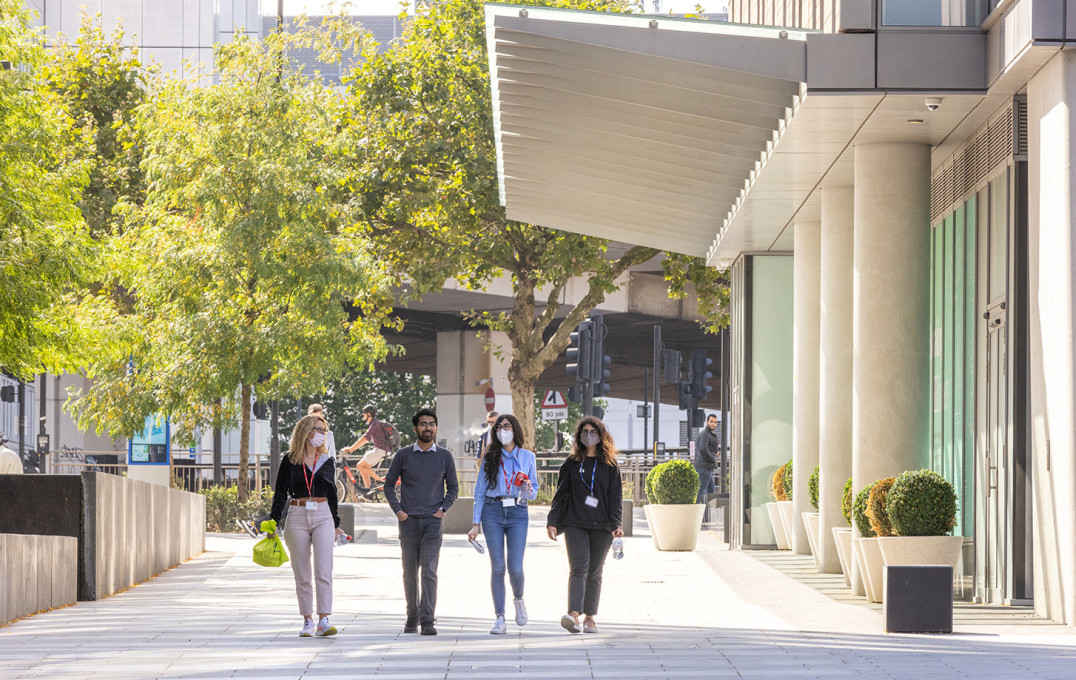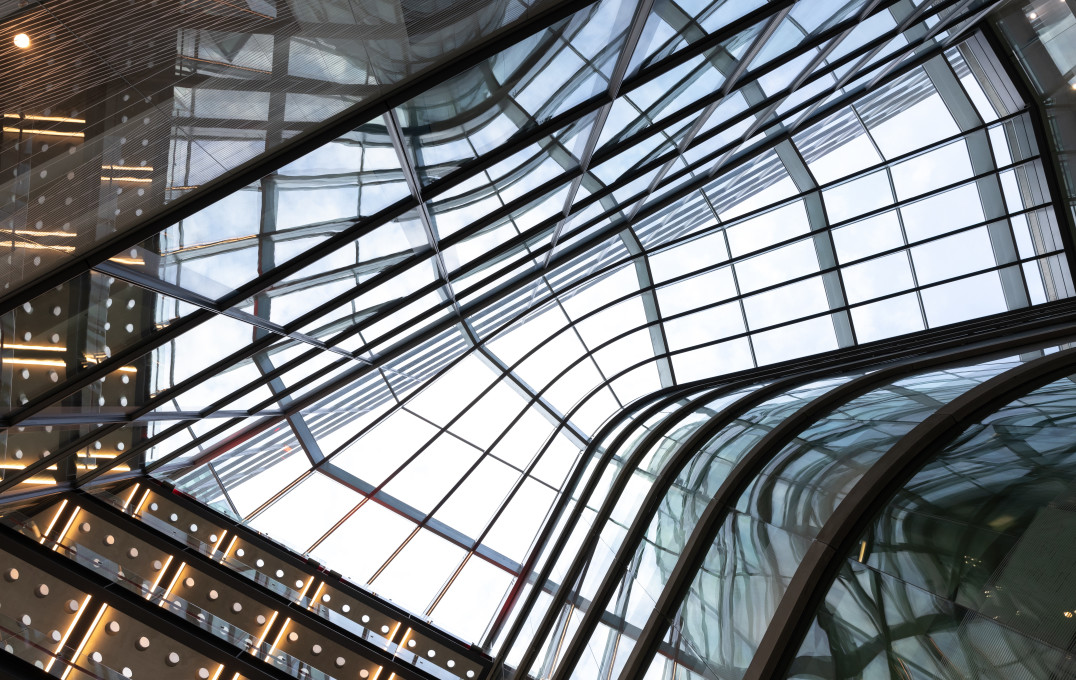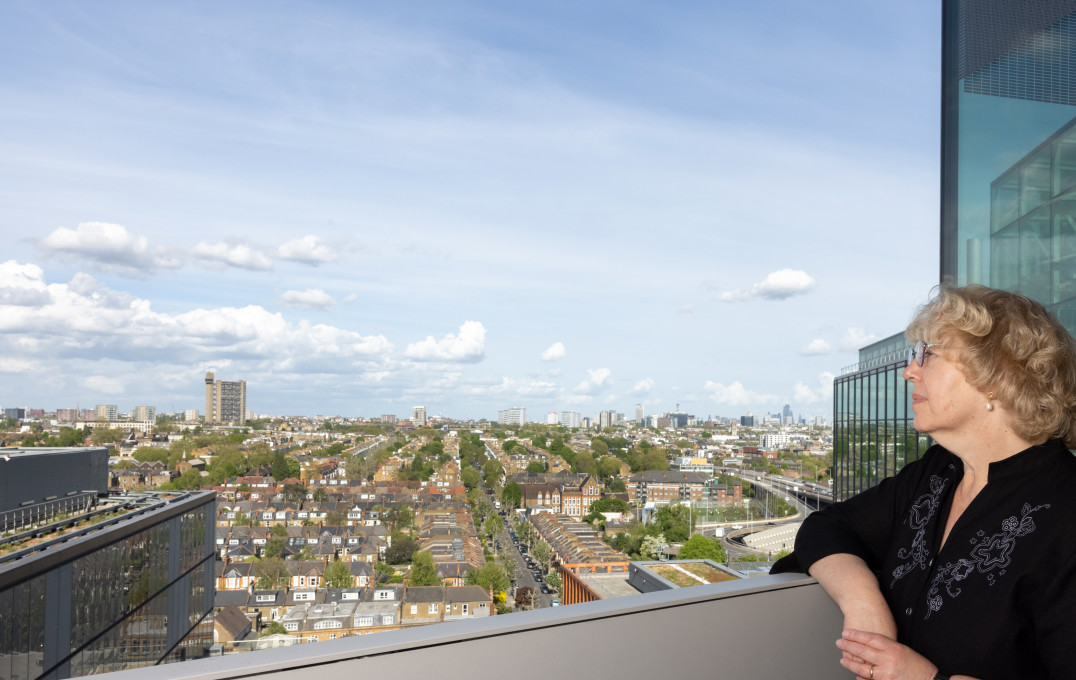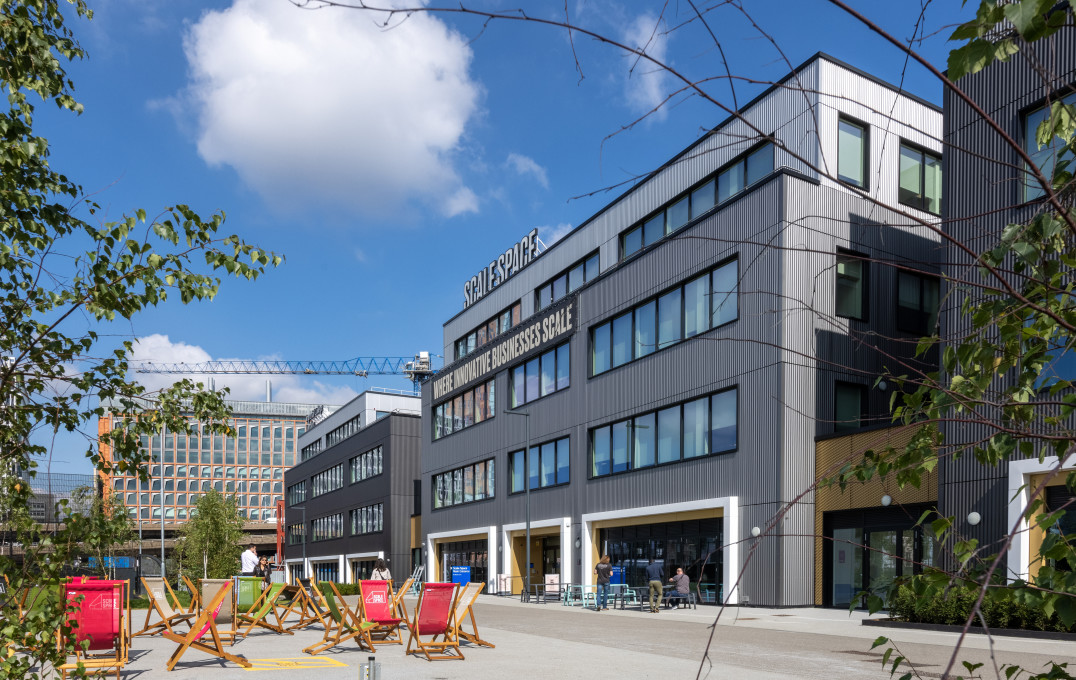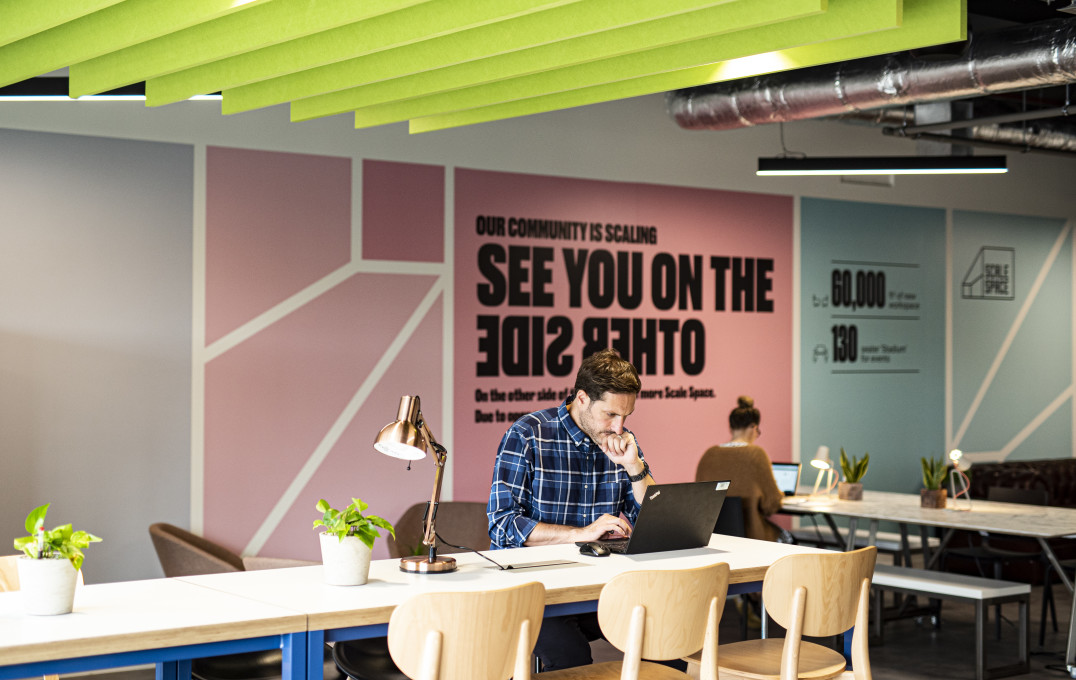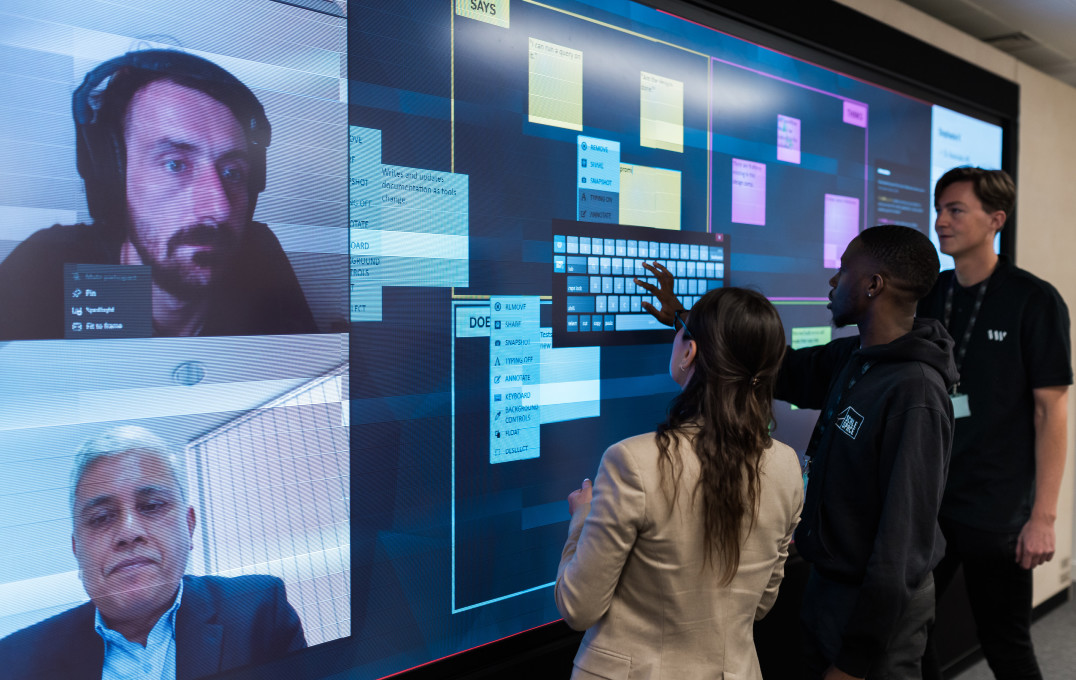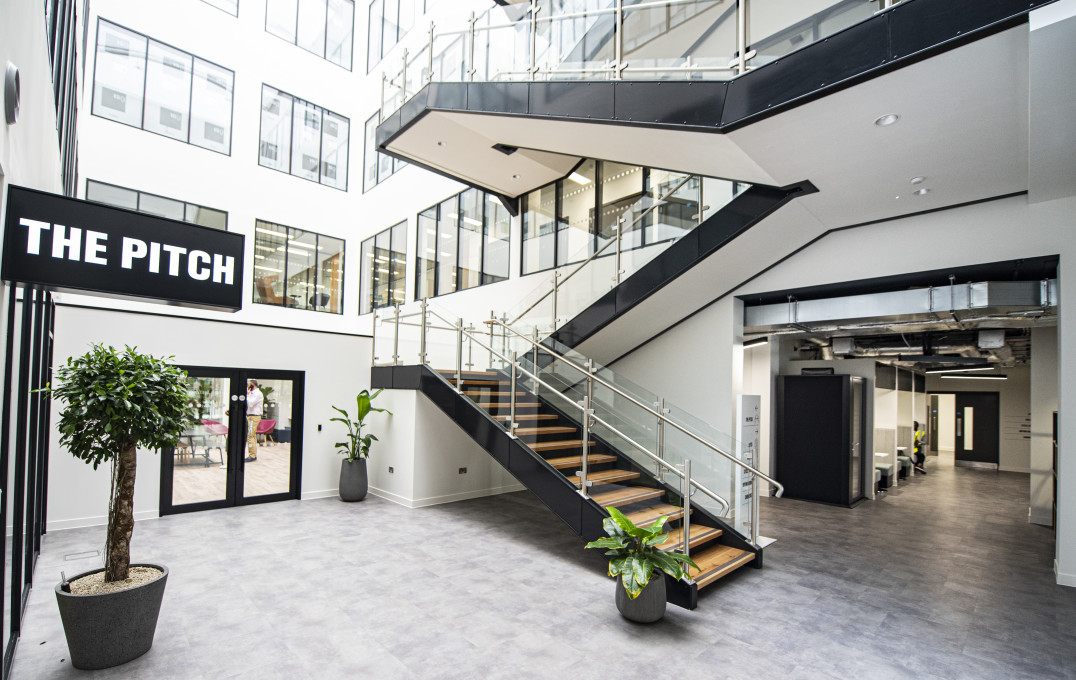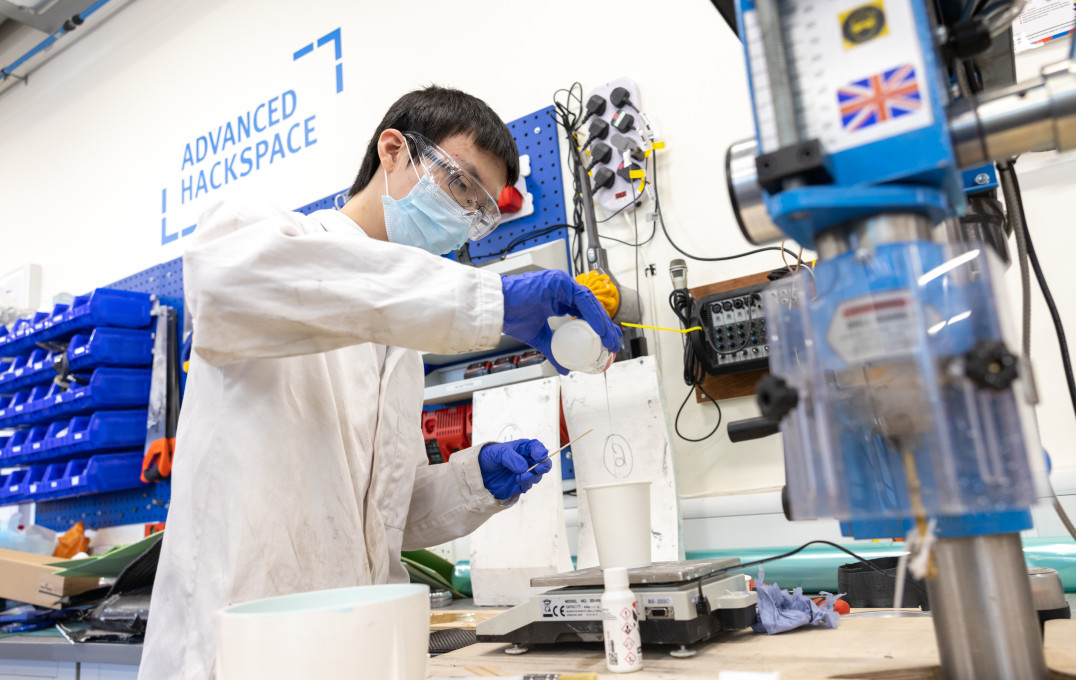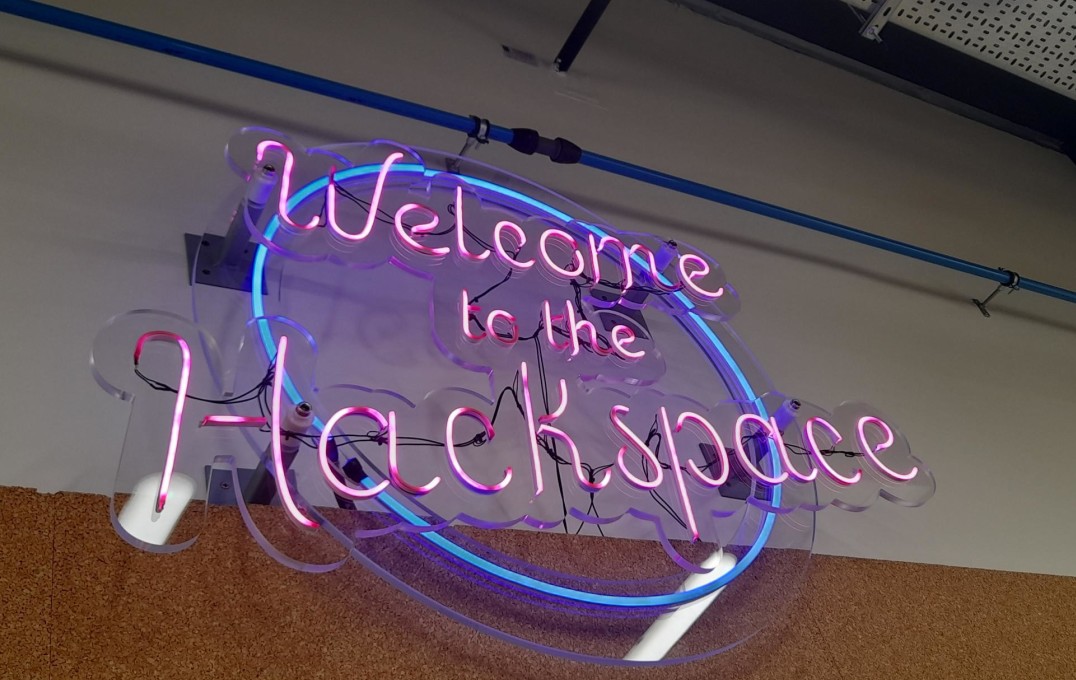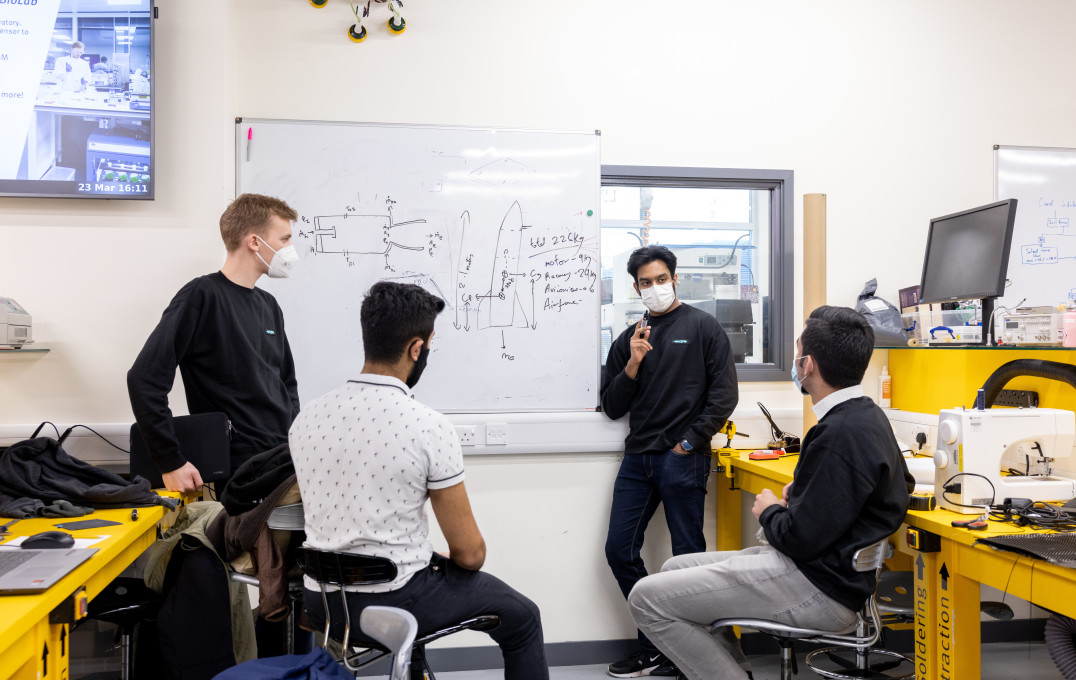FoNS on tour: White City’s thriving research, innovation & engagement ecosystem
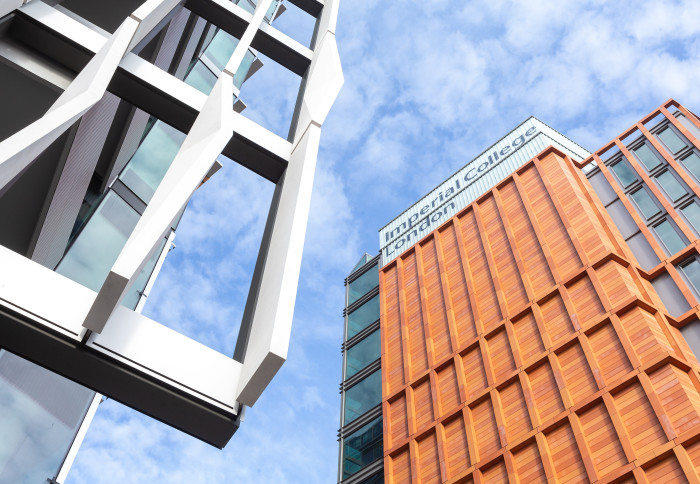
On 8 September, staff from across the Natural Sciences – academic and support – headed to Imperial’s White City campus.
Organised by our Faculty Research Strategy team, the tour enabled 45 members of FoNS staff based at South Kensington and Silwood Park to meet White City-based colleagues, and to explore some of the new facilities and spaces.
After a welcome breakfast hosted by the Accelerating Biosciences and Quantitative Technologies FoNS Champions, Chemistry academics spoke about the ways in which they’ve been settling into the Molecular Sciences Research Hub (MSRH), where the Department relocated its research activities in 2018.
Head of Department, Professor Oscar Ces, gave a whistle-stop history of the broader White City area: from its transformation from fields into the Franco-British Exhibition and Olympic stadium in 1908, to the creation of the White City Estate in 1937, the BBC Television Centre in 1960, the Westfield Shopping Centre’s arrival in 2008 and Imperial’s acquisition of a huge area of the site in 2012. He followed this by mapping out the College’s current White City campus ecosystem, before looking to the future to consider what might be on the horizon for the yet-to-be-developed areas on the south site of the site.
Co-location at scale and bottom-up partnership has helped to break down traditional barriers to collaboration. As the campus continues to grow we are looking to work with other departments in establishing a footprint here and engaging with the amazing local community. Professor Oscar Ces Head of the Department of Chemistry
Professor Ces highlighted how keen Chemistry is to work with Imperial's other departments across the varied and unique opportunities presented by the new campus: 'The White City ecosystem has transformed how the Department of Chemistry works with industry and SMEs. Co-location at scale and bottom-up partnership has helped to break down traditional barriers to collaboration. As the campus continues to grow we are looking to work with other departments in establishing a footprint here and engaging with the amazing local community.'
Dr Jonathan Eastwood (Physics) echoed the value of staff across job roles and departments coming together to learn more about research across the College: 'It was really great to see so many people attend, and not just academic staff but also professional services and support staff from across the Faculty. Witnessing the many new conversations that sprang up during the day, we have lots of ideas for building on the momentum generated by the visit.'
The White City Factor
Professors Ramon Vilar and Felice Torrisi, and Dr Clotilde Cucinotta (all Chemistry), joined Professor Ces, sharing reflections on how the MSRH has provided huge opportunities for researchers. Each emphasised that the buildings that make up the campus, which consciously seek to bring industry and the local community through their doors, has not only given its academics access to modern, state-of-the-art lab facilities and exciting, productive co-location with industry and SMEs, but also had an impact on the atmosphere of their office spaces and labs and the people that work there.
The custom-designed building itself – it’s airy, light, open-plan offices and labs – has changed the researchers’ working ethos, physically drawing them out from behind closed doors in narrow corridors into a much more collaborative space that encourages more interaction between groups. Dr Cucinotta provided an example of this in practice: after the move, her research group began interacting more closely with members of another group. This led to the organisation of biweekly meetings to discuss research on electrochemical interfaces, particularly in terms of corrosion and electrocatalysis, and the computational and theoretical issues faced during their work. As a result, they had the idea of putting the computational tools they were developing together on a wikipage aimed at a non-specialist audience.
Not just the tools, but the people too
ROAR gives researchers from across College access to state-of-the-art instrumentation, with our expert team providing the support necessary to start collecting high quality data from the first experiment. Dr Ben Deadman ROAR Facility Manager
The move has also impacted the way Chemistry has organised its research themes and facilities: the tour provided a window into the MSRH’s research infrastructure, which now has an increased capacity to span strategic partnerships. The Agilent Management Suite (AMS), shaping the future of analytical science, and the Centre for Rapid Online Analysis of Reactions (ROAR), enabling data-centric research in synthesis, both welcomed the tour attendees, introducing key members, giving brief overviews of facilities and encouraging collaboration where useful.
Dr Ben Deadman, ROAR Facility Manager, emphasised that their facilities 'give researchers from across College access to state-of-the-art instrumentation, with our expert team providing the support necessary to start collecting high quality data from the first experiment.'
The teams are very happy to answer questions or arrange tours for interested researchers – email ROAR or email AMS to register interest and find out more.
Video: The Molecular Sciences Research Hub: shaping the future through partnership and collaboration
Imperial interconnected
One of the reasons that this jam-packed tour of many different labs, facilities, innovation and engagement spaces was successfully accommodated in one morning is because, though the White City campus is large, each building is interconnected. This is by design: students, staff, the local community, SMEs, academics, tech accelerators – all inhabit and move through the same physical spaces – on an informal basis every day, in the cafés across campus, and also via activities such as drop-in clinics, hackathons, roundtables and working groups. It’s this percolation or people and ideas that facilitates and augments growth.
As well as facilitating connection between academia and industry, the White City project has been focusing on building useful and meaningful relationships with local residents and the Hammersmith & Fulham council. Professor Ces highlighted how important all of these relationships are, and the ways in which they all come together under the umbrella of the White City Innovation District (WCID).
Find out more
You can find out more about the spaces and initiatives covered on the tour below. Keep an eye out in the FoNS newsletter for future opportunities to visit White City with the Faculty.
- Molecular Sciences Research Hub (MSRH)
- Agilent Management Suite (AMS)
- Centre for Rapid Online Analysis of Reactions (ROAR)
- The Royce Thin Film Device Materials Platform at the Sir Michael Uren Hub
- Translation and Innovation Hub (I-HUB)
- Scale Space
- Advanced Hackspace
- Imperial X
- Institute for Security Science and Technology (ISST)
Article text (excluding photos or graphics) © Imperial College London.
Photos and graphics subject to third party copyright used with permission or © Imperial College London.
Reporter
Claudia Cannon
The Grantham Institute for Climate Change
